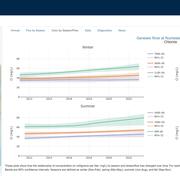Mr. Selbig has 20 years of experience in measuring the quantity and quality of nonpoint source runoff in urban environments. The majority of Bill’s research is focused on characterizing the hydrologic and chemical response of stormwater to structural and non-structural practices designed to mitigate stormwater pollution. Much of his research is used to stimulate or amend stormwater policy within the state of Wisconsin. In the last 10 years his work has helped environmental managers quantify the water-quality benefits of street cleaners, establish criteria for successful use of rain gardens with varying soils and vegetative species, better understand the synergistic effect of green infrastructure compared to conventional curb-and-gutter construction techniques, and identify through source tracking potential “hot spots” of environmental toxicants in the urban environment. Bill's involvement in advancing both analytical and field methods for water quality data collection has proven beneficial to environmental managers, engineers, and academia who depend on accurate water-quality data for evaluation of proprietary devices, development of total maximum daily loads (TMDLs), permit compliance, and hydrologic modeling. Bill currently holds a patent on an innovative stormwater sampling device known as the Depth-Integrated Sampler Arm (DISA). In addition to working for the USGS, Bill currently serves on several local, state and national research groups and technical committees that focus on urban nonpoint runoff.
EDUCATION
M.S., 1998, Water Resources Management (Hydrology), University of Wisconsin – Madison
B.S., 1993, Geology, University of Wisconsin – Madison
AREAS OF EXPERTISE
Bill has considerable experience monitoring and interpreting nonpoint source runoff in urban environments. He has participated in several research studies that focus on mitigating stormwater pollution through structural or non-structural practices such as street sweeping, rain gardens, and low-impact development (LID). Bill is also involved in improving the accuracy of water-quality data through development of new sample collection and processing methods.
PROFESSIONAL POSITIONS AND ACTIVITES
- American Water Resources Association
- American Society of Civil Engineers (ASCE) - Gross Solids Pollutant Protocol Committee
- Watershed Science Bulletin editorial board
- Chesapeake Bay Watershed Stormwater Advisory Panel
- Transportation Research Board of the National Academies
- Wisconsin Department of Natural Resources Technical Standards Oversight Committee
- Great Lakes Commission on Green Infrastructure
CURRENT PROJECTS
- Characterization of Solids Concentration and Particle-Size Distribution from Urban Land Uses and Source Areas
- Improved Stormwater Sampling Techniques
- Evaluation of the Water Quality Benefits of Permeable Pavement
- Monitoring and Predicting the Impacts of Trees on Urban Stormwater Volume Reduction
- Measuring Leaf Collection Programs as a













